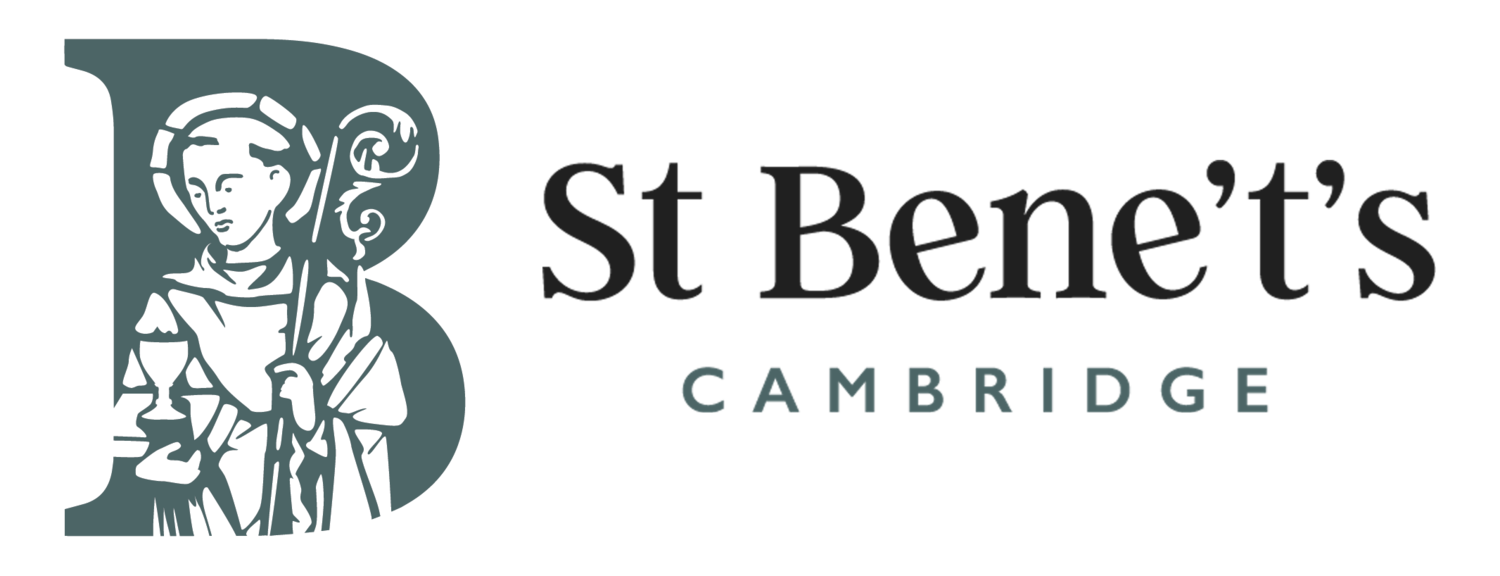St Bene’t’s and Corpus Christi College
Like many churches in Cambridge, the history of St Bene’t’s is tied to the life of the University, founded in 1209. The bells of St Bene’t’s rang out notice of University ‘acts, clearums, congregations, lectures, disses and such like’ from at least 1273, and in the same century, the church was expanded to accommodate a larger congregation. But a new chapter opened after the Black Death reshaped Cambridge life around 1348.
Among the many calamities of that time, the plague decimated the Guild of St Mary, one of the most engaged religious and charitable organisations in the city. By 1349, its debts, assets, ministry, and chaplains were merged into the Guild of Corpus Christi, newly active in the parishes of St Bene’t’s and St Botolph’s. The Bede Roll, pictured above, includes the names of members of both guilds, originally to allow prayer for their salvation, in life and in death.
Within a few years, the new guild founded Corpus Christi College with funds raised by members in Cambridge and London, some of whom came from the nation’s wealthiest families. Key planners included: William Horwode, mayor of Cambridge; Henry de Tangmere, Cambridge town receiver; John Hardy, University stationer; Andrew Aubrey, mayor of London; and later Henry Walton, treasurer for the Duke of Lancaster.
The parish of St Bene’t’s served as a chapel for Corpus Christi College until 1662. Successive Masters and fellows have made their mark upon the church to the present day, maintaining the building and ensuring pastoral care for the congregation by appointing ministers. From the fourteenth to the twentieth century, only eighteen ministers were not Corpus fellows. Among the most famous early Masters of Corpus was Richard de Billingford, three-time Chancellor of the University and diplomat for Henry V. Buried in the chancel of this church, his memorial brass stands in the south aisle.
In the late Middle Ages other guilds were active in the parish, and a hermitage and chapel were built along Trumpington Street in 1361, dedicated to St Anne. Vicars of St Bene’t’s had the right of celebrating Mass there from 1458 until the mid-16th century. The altar currently standing in the south aisle, a fragment of a high altar of the Middle Ages, is dedicated to St Anne.



